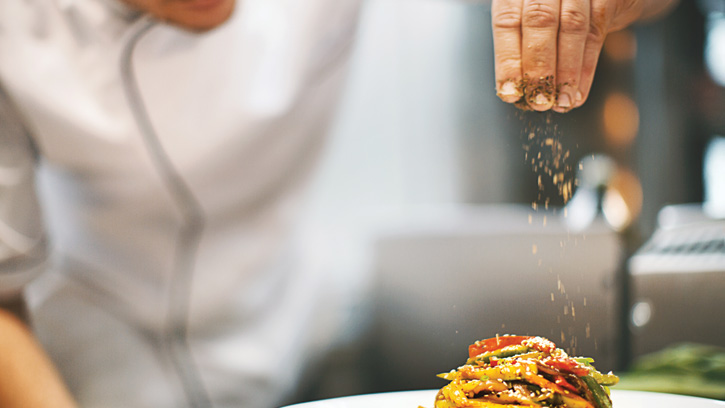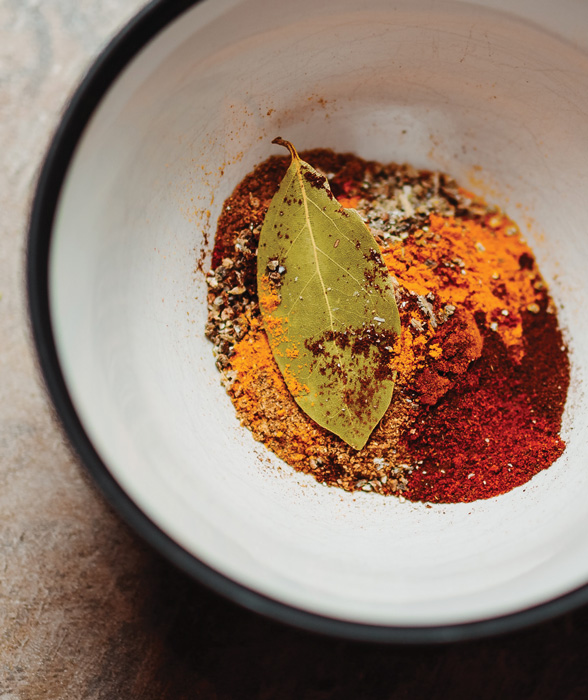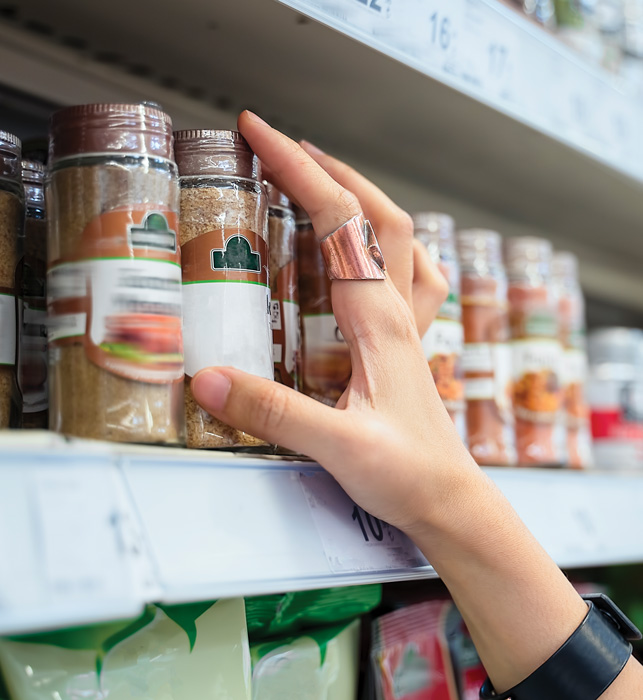How to Develop Clean Label Seasonings
Ingredients | APPLIED SCIENCE
The value of the clean label ingredients market was $38.8 billion in 2018, according to a 2019 report by Allied Market Research. With a projected compound annual growth rate of 6.8% between 2019 and 2026, it is estimated to reach $64.1 billion by 2026. Clearly, consumer demand for clean label ingredients is on the rise across varying food categories such as seasoning mixes, bouillons, wet and dry pasta sauces, prepackaged, and ready-made meals.
In fact, the definition of “clean label” is a consumer-driven term. The classification overlaps with food products that are considered natural, organic, and free from preservatives and additives, but also extends to products made with few and simple ingredients depending on context and location. Without a fixed definition, direct tactics for developing clean label seasoning and meal mixes can be challenging to pinpoint. Of course, it takes more than a label to address consumer desires. Rather, to develop natural and clean label seasoning, it takes a dedicated strategy that concentrates on customer interests and insights in tandem with well-sourced ingredients.
Clean Labeling Past and Present
To be recognized as a clean label product, the item must be made with fully natural or organic ingredients such as plant-based ingredients, ingredients with no synthetic mixing, or ingredients with no chemical additions such as colorants, artificial flavors, or preservatives. In this context, the term “natural” means nothing artificial or synthetic, including all color additives, regardless of source, was included in or added to a food that would normally not be expected to be in that dish.
This priority for clean foods reflects heightened consumer demand for healthy food options, which consumers associate with recognizable and reduced ingredient lists. That said, there is technically no legal definition of a clean label. In a recent IFIS blog, Kantha Shelke, a food scientist and senior lecturer at Johns Hopkins University, stated, “The lack of legal definition is a major issue for those in the product development and manufacturing world because ‘clean is in the eyes of the beholder’ and what may be ‘clean label’ in one sector may not be so in another food sector.”
As awareness and demand for healthy food products continue, especially in relation to ready-made or quick meals, there is a growing need to clearly define clean labels alongside key terms such as organic, non-artificial, and natural food products. With varying definitions across different countries, government protocols, and consumer markets, it’s vital for businesses to consistently respond to and address consumer perceptions.
Seasoning Mixes in the Mix
Seasoning is associated with a ready-made mixture of several spices (such as black pepper, paprika powder, turmeric, red hot pepper, etc.) in addition to some dried vegetables and herbs (such as onion, garlic, carrot, mint, thyme, etc.) that enhance the flavor and aroma of prepared dishes. The main motivation to use seasoning is to achieve an enhanced taste that cannot be achieved on its own.
The market spans many ready-to-eat categories, including bakery and confectionery, soup, noodles, pasta, meat and seafood, sauces, dressing, savory snacks, and more. The global seasoning and spices market size was valued at nearly $35.4 billion in 2021 by Grandview Research and is expected to expand at a CAGR of 5.6% from 2022 to 2030. This growth is attributed to rising awareness of the health benefits of spices and herbs, along with an increased population cooking at home following COVID-19 lockdowns.
Furthermore, there is an increasing demand from buyers for new flavors from different regions of the world, fueling the market for seasoning mixes that reflect regional or ethnic flavors consumers can incorporate into their regular cooking routines. These localized, authentic cuisines have gained international recognition with rising global interrelation across migration, travel, internet, and media interconnectivity, prompting the production and sale of prepared seasoning mixes.
Seasoning, however, is a primary food product in the discussion of clean labeling since it plays a central part in imparting flavor to many home-cooked or ready-to-eat meals. In addition to increased consumer spending, users have an increased desire to avoid harmful ingredients and additives associated with processed foods in their seasoning mixes.
Strategic Clean Labeling
While clean label seasoning mixes might seem straightforward, it’s a balancing act to safely obtain, combine, preserve, package, and transport the product, all while addressing consumer desires and turning a profit. Businesses and suppliers can address these needs by developing a clean labeling strategy. Vital steps for this strategy include the following:
1. Define the “hero” element of the seasoning mix. Every seasoning mix has a primary ingredient that plays a significant role in its flavor profile and consumer perception. It’s essential to identify and boost that hero ingredient. For example, a seasoning mix that brings out “Cajun” flavors is expected to deliver spice and heat. Identifying the hero ingredient that makes this possible helps define that product under the category of “Cajun.” This requires initial prototypes created by chefs followed by internal testing sessions to pinpoint an accurate flavor profile. By defining a singular hero element, it’s possible to focus efforts on ensuring the primary flavor is consistent with consumer perceptions and flavor goals.
2. Address the importance of aroma, color, and texture for consumer satisfaction, in addition to taste. While flavor has a leading impact on whether a consumer approves of a purchase, smell, color, and texture also play a huge role in a tasting and cooking experience. To address these specific requirements, a consumer focus group brings consumer desires to the forefront to arm developers with the changes that incorporate consumer feedback on attributes such as taste, visual, and cooking methods. After approval of a recipe from both internal teams and external focus groups, then it’s time to launch the product.
3. Consider supply chain, sourcing, and sustainability to ensure 100% natural ingredients. The supply chain presents particular challenges for clean-label products, especially amid recent issues due to the COVID-19 pandemic and geopolitical unrest. Consumer demands for clean label products encapsulate a desire for healthy food options, but also organic and sustainable options that prioritize environmental values.
For food manufacturers, this means understanding the supplier’s sourcing and processing, in addition to the resulting product qualities. Consumer demands often affect marketing first, products next, and suppliers last, but suppliers can improve their supply and production to also be clean across quality and conditions. Clean-label suppliers and seasoning product developers make themselves more competitive by strengthening their distribution systems, entering into clean label partnerships, making new regional acquisitions, and expanding their product range.
4. Packaging plays a huge role in communicating clean label attributes. With immense competition in the global seasoning market, a clean label sets a product apart. According to the 2021 International Food Information Council (IFIC) survey, “From ‘Chemical-sounding’ to ‘Clean’: Consumer Perspectives on Food Ingredients,” nearly two out of three consumers claim that ingredients have at least a moderate, if not greater, influence on their food and beverage purchases. Most consumers, however, don’t have the time and energy to research every product before they buy it. This means when shopping, on-package ingredient information sources are more influential than online sources, marketing, or word-of-mouth.
It’s paramount for manufacturers of clean label products to clearly state what makes their products clean and list ingredients accordingly. Identifying the main ingredients on the front packaging, alongside thorough ingredient lists and nutrition facts on the back, is crucial, while images or suggested recipes that accurately reflect the product play a role in catching the consumer’s eye. Consumers respond well to recognizable and fewer ingredients. If the product addresses these goals, the package is a key player in communicating that to buyers.
5. Prepare for known obstacles with strategic planning. Clean label product development is not without challenges. These include adopting a new process that is communicated across the organization and suppliers. In this way, companies can make changes without compromising productivity, overcome budgetary concerns, and address compliance standards in addition to focusing on customer expectations. When incorporating clean label goals into product development, it’s essential to understand and create a strategy that acknowledges and accounts for these obstacles.
A ‘Win-Win’ for Businesses and Consumers
The 2021 IFIC survey on clean labels also showed that nearly half of consumers qualify themselves to be clean eaters and that number continues to grow. The increasing desire from consumers for clean labeling establishes a clear need for food businesses, suppliers, and governments to define and address these demands across the entire process of seasoning sourcing, testing, manufacturing, and selling. The negative connotation consumers connect with certain substances such as food coloring, added flavors, or preservatives is due to increased awareness of health, safety, and environmental impacts. This indicates a prioritization of fewer and more natural ingredients while still accomplishing a flavor profile that meets consumer expectations.
While manufacturers of seasoning products may hesitate due to budgetary, supply, or workflow concerns, making the change to clean label products is beneficial for businesses and consumers alike. Clean labeling not only gives food products a natural, healthy appearance but also thoroughly and systematically ensures the product delivers flavor, visuals, texture, and aroma, resonating with consumer desires and stimulating product sales. It’s a win-win scenario that creates competition in the market and improves health for consumers alongside sustainability and health standards in the market.
Omnivore Podcast
Unilever R&D senior scientist Neval Ceyhun shares expert advice on the five elements necessary to develop a clean label strategy for seasonings.
LEARNING OBJECTIVES
- Review the definition of clean label ingredients.
- Get advice on the five elements necessary to develop a clean label strategy for seasonings.
- Learn why making a change to clean label products is a win-win for food companies and consumers.






